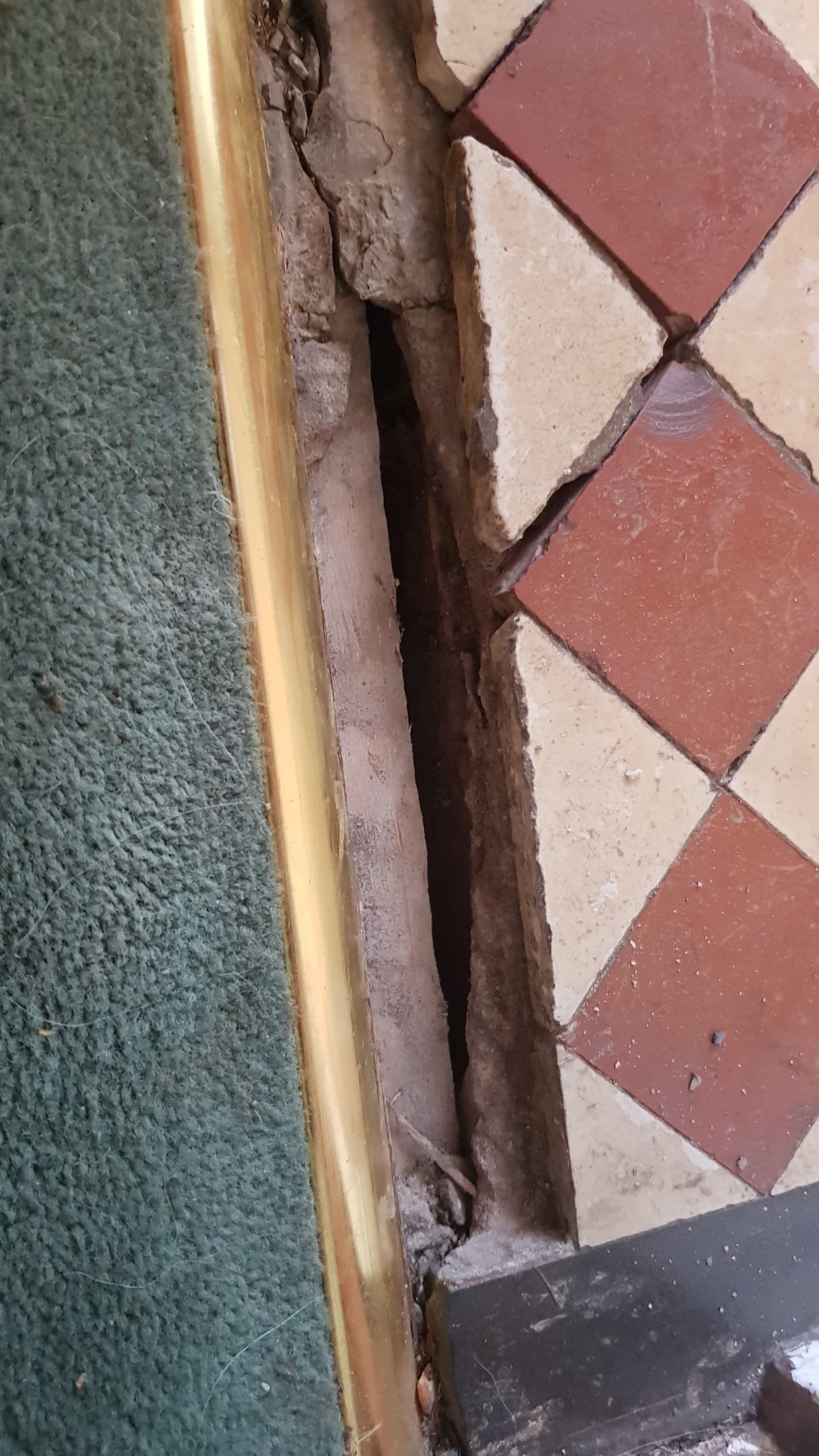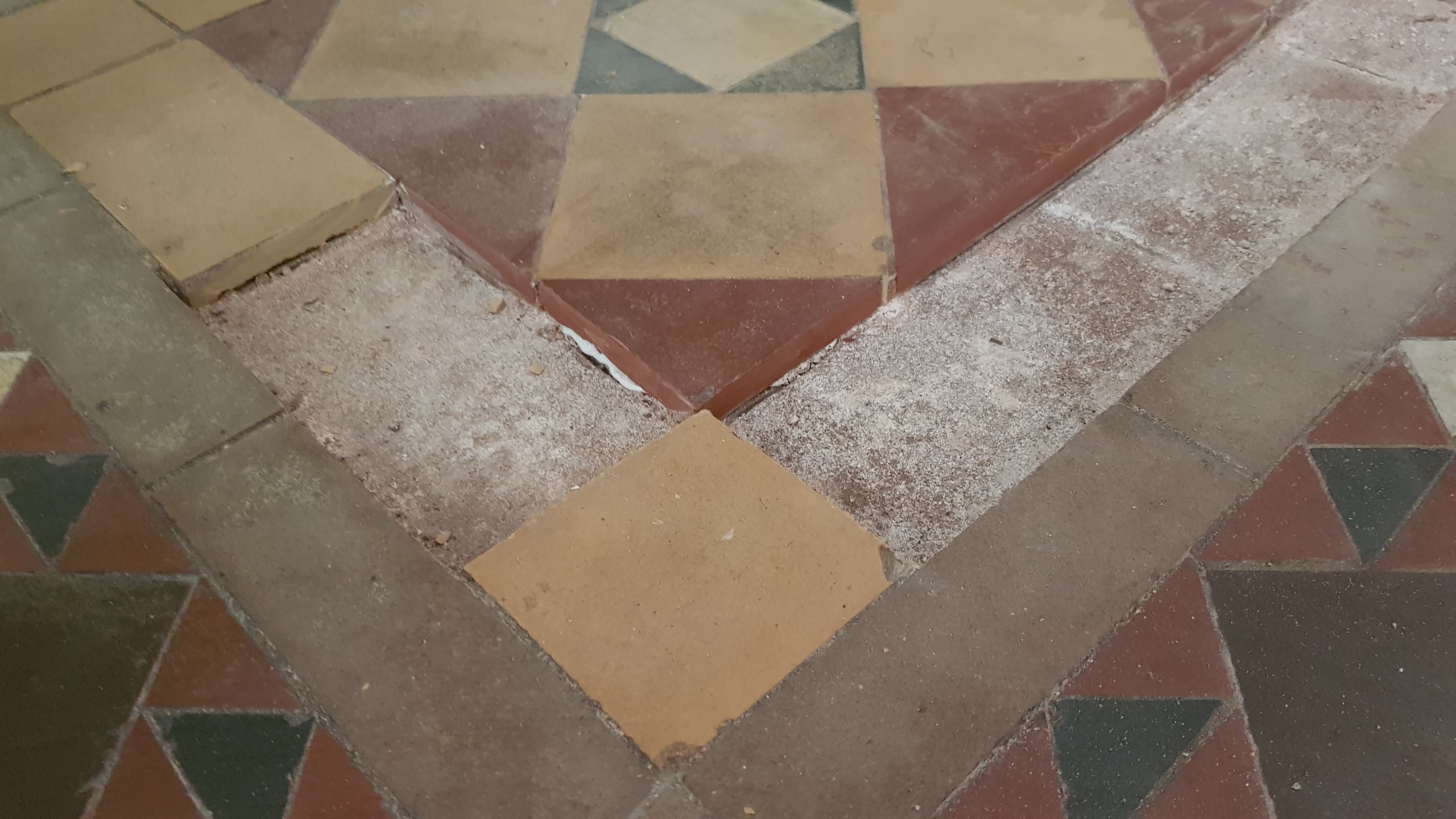Pictures below are from the restoration of Victorian Hallway Tiles that I carried out at a marvellous old property just south of Doncaster last year. The property was originally built and owed by the railways in fact its located metres away from the East Coast mainline which links Edinburgh with London and calls at places like Doncaster, York, and Newcastle.
The owner of this property was left a very old photograph by the previous owners showing two people stood by the front door and the floor tiles are just visible in the photograph.
 |
 |
Even though the house had been kept in great condition by the railways for well over one hundred years the large Victorian floor had unfortunately taken a hammering. In total around 130 damaged tiles would need removing and replacing with replicas. This would be a painstaking task but would make all the difference to the overall look of the floor.
 |
 |
Replacing Victorian Hallway Tiles
The current owner was keen to have the floor renovated and I was asked to do the work, old floors like these are a sought-after period feature and can add a lot of value to a property once restored. Fortunately, Victorian tiles are still popular today, and I was able to source replacements without too much trouble.
I started the restoration by removing the old cracked tiles and cleaning up the base. With this done I started the lengthy process of carefully cutting tiles to fit the original pattern and then fixing them in place with a modern adhesive.

Deep Cleaning Victorian Hallway Tiles
After leaving the tile adhesive to set overnight I came back the next day to deep clean the floor, by cleaning the old and new tiles together it will ensure the floor has a consistent appearance when finished.
Sometime in the past layers and layers of an old sealer had been applied to the floor, the sealer was flaking off and holding on to decades of dirt. To remove the old sealers, we used Remove and Go, it was sprayed on to the tiles and then left it to dwell and soak in for ten minutes.

The tiles were then scrubbed using a rotary floor buffer fitted with a 200-grit diamond pad which made short work of the old floor sealers. The floor was then treated with Tile Doctor Pro-Clean to clean the tiles further, again a diamond pad was used to go over the tiles.

Once happy the Victorian tiles were as clean as the could be it was time to give the floor an acid wash which would remove any old mineral deposits including grout smears. We also recommended this for old Victorian floors which do not have a damp-proof membrane installed and can suffer from white efflorescent salt deposits as moisture rises through the tile. To do this Tile Doctor Acid Gel was scrubbed into the to the floor again using a 200-grit burnishing pad to make the acid gel work hard. Afterwards we rinsed the floor several times removing the slurry with a wet vacuum. This kept the mess to a minimum and the floor was already looking great.

Sealing Victorian Hallway Tiles
The property was left for a few days to let the floor dry out completely and when I returned seal the floor my first job was to check the moisture readings in the floor with a damp meter. I needed to ensure it was as dry as possible before applying a sealer and in this case, I didn’t have to worry.
Next, I applied four coats of Tile Doctor Colour Grow which works by seeping into the pores of the tile protecting it from within. I consider this to be best choice for sealing old Victorian tiles like these as it does a nice job of improving colour and its fully breathable. Being breathable is important due to the lack of the damp proof membrane and will allow moisture to pass through the tile and sealer and not become trapped under the floor where it could spread to the walls and cause rising damp.

PS.. If you have ever wondered if you have applied enough sealer all you need to do is drop some water onto the floor, if the tile is sealed sufficiently the water will form a bubble on the surface.

Source: Victorian Tile Renovation Service in Doncaster, Port Talbot
Never use a strong cleaning product or steam cleaner for the regular cleaning of sealed tiles as this will reduce the life of the sealer. We recommend using a specialist tile cleaning product such as Tile Doctor Neutral Tile Cleaner for the regular cleaning of sealed surfaces, if you do use another product always read the label first, most supermarket tile cleaners are only suitable for use on Ceramic or Porcelain tiles.